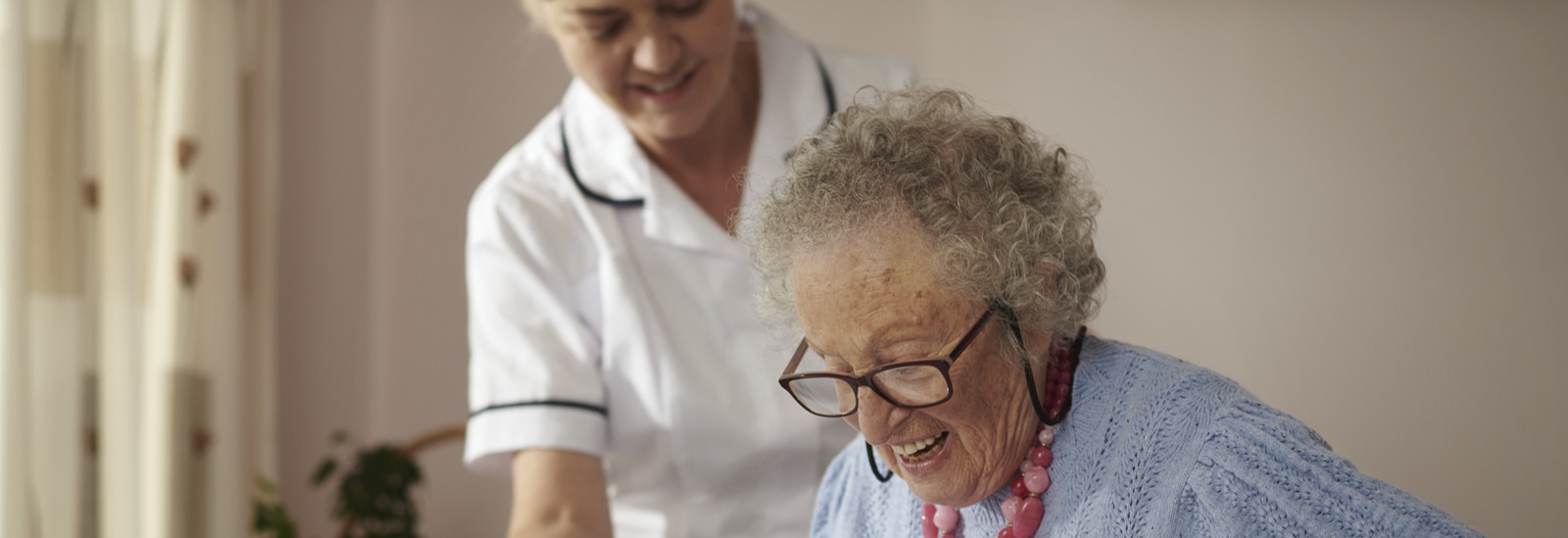Between 4 and 8 percent of the world's population are affected from some kind of urinary incontinence.
TENA incontinence products are designed to be used one at a time. They come in different types and sizes, with different absorption levels. To properly meet the needs of the resident, it’s important to choose the right incontinence product.
Double padding – the practice of inserting a “booster” pad inside an individual’s absorbent product – may seem like a good way to provide extra protection, but in fact it reduces functionality, and comes with several risks:
Wetness against the skin: When a resident voids more than the capacity of the booster pad, the urine may not pass through the backing of this pad into the outermost absorbent product. Instead, the overfilled booster pad will cause wetness against the skin, resulting in overhydrated skin, which can lead to skin breakdown.
Leakages on clothes: Urine that the booster pad can’t absorb will leak out on the sides. And since the outermost product is not snugly fitted to the groin, it may not be able to properly absorb the leaked fluids.
Skin irritation and pressure ulcers: In addition to its effect on the resident’s personal dignity, the extra bulk between the legs may cause rubbing against the skin. The poor fitting of the outer product may contribute to this, and there’s also a risk of friction when the booster pad is removed.

Obese residents are more likely to:
Include a daily examination of the condition of your residents’ skin in their care plans. Check skin folds in particular. Keep them dry and clean to prevent friction. Barrier creams or zinc creams can also help reduce skin-to-skin friction. Make sure to use products that specifically meet the unique needs of clinically obese users.

Good continence care is essential for good skin health. Prolonged exposure to urine and/or faeces leaves residents’ skin at greater risk of irritation and maceration. Wearing an incontinence product that is the wrong size or has the wrong level of absorbency can result in chafing of the skin. Using non-breathable bed protection may also increase the risk of skin damage, as does leaving a resident in a wet or soiled product for longer periods.
Preventive perineal skincare is important too. Washing with ordinary soap and water in the sensitive genital area can cause skin irritation. It’s important to use skincare products that gently cleanse, moisturise, and preserve the skin’s natural barrier and keep it healthy, resilient, and protected.
With the right products, right toileting and changing routines, and good skin care, it’s possible to maintain good skin health in the genital area.
Help your staff provide expert skin care with our TENA ProSkin™ 3-step skin health solution – specifically designed for elderly skin.
A proper bowel management programme will help prevent unplanned bowel movements and avoid complications like constipation. Residents’ skin should not be exposed to faeces or urine more than necessary. Prolonged contact with faeces is a key risk factor for IAD as they contain harsh enzymes and corrosive compounds that can quickly degrade the skin. Make sure to remove any faeces promptly by wiping from front to back to avoid faecal bacteria entering the urethra.
Take advantage of the gastrocolic reflex, which is responsible for the urge to defecate after a meal, by helping your residents with regular mealtimes, ensuring the best eating conditions, and encouraging them to use the toilet after meals – especially after breakfast when the reflex is strongest. Ensure a correct toilet position that facilitates bowel movement.
Faecal incontinence can be a devastating condition, but effective treatment and management can improve quality of life. Learn more about how to maintain a healthy bowel here.
IAD presentations are often mislabelled as pressure injuries, but there are important differences. Whereas IAD forms on the surface of the skin and is related to the skin’s prolonged exposure to urine or stool, pressure injuries start deeper in the skin layers, appearing from the inside out. A pressure injury is a localized injury, usually over a bony prominence, and is a result of pressure, or pressure combined with shear. Pressure injuries can appear anywhere on the body.
Research shows a clear link between IAD and an increased risk of pressure injuries in the buttock regions. Both IAD and pressure injuries cause considerable discomfort and can be difficult to treat – another reason why preventive perineal skincare and good continence management is so important.
There are many factors that can interfere with the skin’s balance. In this article we examine some of the important factors to have in mind when it comes to incontinence care and personal hygiene.
Audited by Josefine Grandin, District nurse, urotherapist, 2022-04-25
Here at TENA, we're on a mission to improve the life quality of millions of people worldwide with innovative products that have a continually lower carbon footprint. Learn more about our commitment to a sustainable future, and how TENA products can help you reduce your carbon footprint too.
TENA is a brand of Essity, a leading global hygiene and health company. With over 60 years of experience TENA is the No 1 adult incontinence brand globally*. We offer a full range of absorbent products, skincare and digital health technology solutions that are tailored to the needs of individuals, their families and healthcare professionals.
With TENA, Essity is at the forefront of developing products and services that help improve dignity and the quality of people’s lives. We strive for sustainable continence care with better care and better products.
*Euromonitor International Limited; Retail Adult Incontinence, all channels, RSP value sales, Tissue & Hygiene, 2023 ed
At TENA we offer products and solutions for a wide range of people. You are always welcome to visit our other TENA sites.
TENA, a brand of Essity - a global, leading hygiene and health company. Every day, our products, solutions and services are used by a billion people around the world. Our purpose is to break barriers to well-being for the benefit of consumers, patients, caregivers, customers and society. Sales are conducted in approximately 150 countries under the leading global brands TENA and Tork, and other strong brands such as Actimove, Cutimed, JOBST, Knix, Leukoplast, Libero, Libresse, Lotus, Modibodi, Nosotras, Saba, Tempo, TOM Organic and Zewa. In 2023, Essity had net sales of approximately SEK 147bn (EUR 13bn) and employed 36,000 people. The company’s headquarters is located in Stockholm, Sweden and Essity is listed on Nasdaq Stockholm. More information at essity.com.